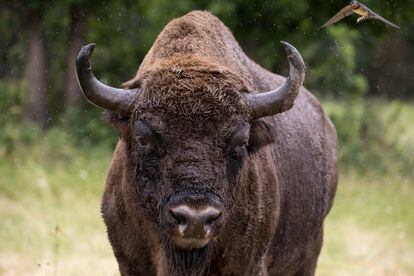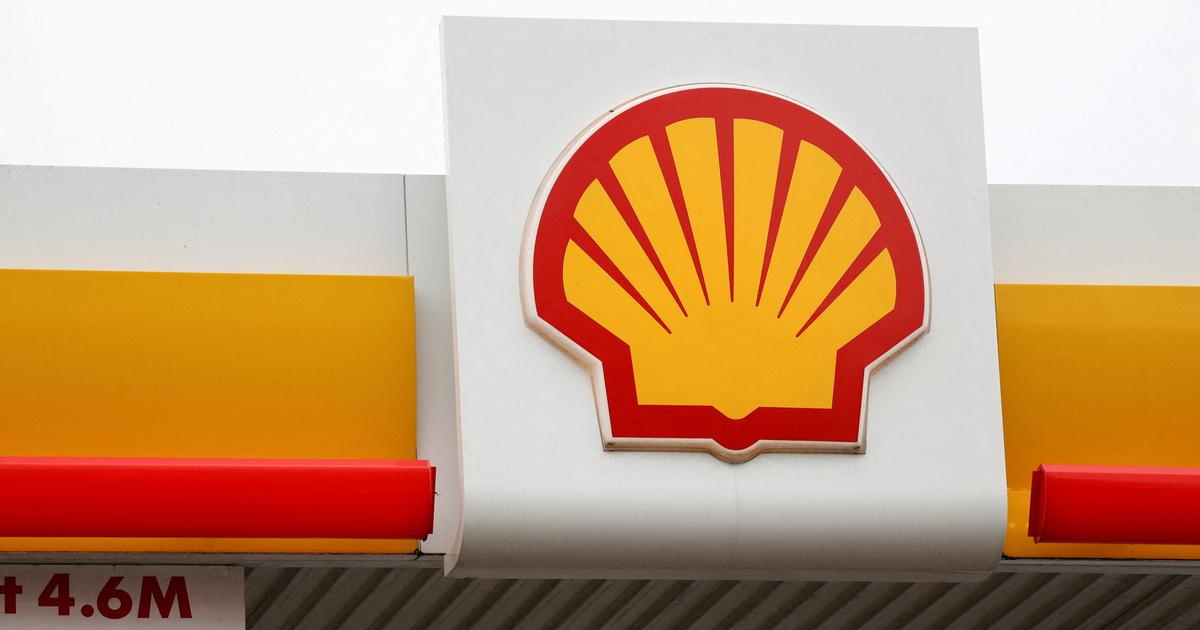[
This piece corresponds to one of the shipments of EL PAÍS's weekly Climate and Environment newsletter, which comes out every Wednesday.
If you want to subscribe, you can
via this link
].
Hello!
As if it wanted to remind us where we are exactly, this 2021 is going to say goodbye with temperatures above normal for this time in the Iberian Peninsula.
It is the culmination of a year of extreme and extraordinary meteorological events.
It has also been the year in which science has made it clear that human beings have a problem - generated by themselves - and that it is called the climate crisis.
And it has been the year in which governments clearly admitted that the plans they have on the table will not allow warming to stay within safe margins.
Extreme heat and science
From North America to China to Central Europe, the northern hemisphere summer was filled with extreme events in the form of heat waves, colossal fires and devastating floods. The extreme climate defied the world, and its effects were noticeable in the loss of permafrost in Siberia, in the tremendous fires of the west coast of the USA or in the increase of temperatures in Spain.
At the beginning of August, while these phenomena were taking place, the great scientific report on climate change produced by the IPCC, the panel of experts that has been laying the foundations for knowledge of global warming for more than three decades, was released.
The main conclusion was that it is "unequivocal" that the human being "has warmed the atmosphere, the ocean and the land".
In addition, "human activity is making extreme weather events (heat waves, droughts, intense precipitation) more frequent and serious," as one of its authors explained in this interview.
Climate and Coal Summit
The Scottish city of Glasgow hosted in November the climate summit, the so-called COP26, which had to be delayed for a year due to the pandemic. The meeting closed with the recognition by the almost 200 countries present that the current emissions cut efforts are not enough and that they must be updated upwards starting next year. Furthermore, for the first time, there was an explicit call to disengage from coal and fossil fuels. Glasgow was also the scene of countless sectoral pacts (although not legally binding) and protests in the streets.
2021 was also the year of the return to the international fight against climate change in the United States.
And the signing of a climate peace agreement between the United States and China, the two powers that now contribute the most to global warming.
Both have committed to collaborating with, for example, measures to reduce methane emissions.
This gas has been put in the spotlight of the climate fight also this year.
Gases on the rise
But, in the face of declarations, pacts and promises, reality was imposed again: carbon dioxide emissions in 2021 are expected to rebound by 5% after the fall caused in 2020 by the pandemic.
Something similar is expected to happen with greenhouse gases in Spain.
Climate law
In May, Congress approved Spain's first climate change law, which sets goals to fight against warming and was called unambitious by some parties and NGOs.
These are the most prominent measures of the standard and this information contains a follow-up of the degree of execution.
Waste and wolf law
The climate change law is not the only important environmental regulation that has been developed this year.
Last week, Congress approved the waste bill, which should help Spain comply with European plastics directives and improve its extremely low recycling rates.
2021 was also the year in which the wolf was no longer considered a hunting species in Spain, which has generated a confrontation between the Government and some communities.
Congress also approved the new law on the legal regime of animals that considers them "sentient beings" and the draft bill on animal welfare was presented.
And the protests of schoolchildren and families against cars intensified.
The agony of the Mar Menor
This year will also be remembered as the great collapse of the Mar Menor, the largest salt lake in Europe, which experienced a tremendous episode of fish kills in August.
The pollution of the Mar Menor has already left several high-ranking politicians and farmers on the verge of sitting on the dock.
And a citizen campaign to promote a law in Congress to protect the Mar Menor and have its own legal personality has collected half a million signatures of support, which has managed to reach Parliament.
Operators remove dead fish from the sea from the beaches of the Mar Menor in August.Juan Carlos Caval (EFE)
Apart from the environmental milestones, these are some of the reports from the Climate and Environment section that I think are the most recommended for 2021:
January
A laboratory to listen to the planet.
The Polytechnic University of Catalonia manages the world's largest database of sounds from nature and the human impact on it.
How much do the mega solar power plants occupy: researchers warn of the impact of the photovoltaic boom
February
Growing up in a neighborhood with pollution, growing up in a neighborhood with clean air.
Research that has followed the growth of 3,700 minors shows that pollution affects newborn weight and lung and cognitive development.
The moment of truth for the uranium mine that threatens the Retortillo dehesa.
After more than a decade of controversy, the Nuclear Safety Council and the new climate change law may bury the Berkeley mining project.
March
Bicycles, the new French revolution.
Paris is committed to two wheels as the key to future urban mobility.
"The cars make a lot of noise and we can't concentrate in class."
The school protest against pollution reaches Madrid, Bilbao, Girona and Melilla
April
The drought that scorches Mexico, a predictable and devastating tragedy.
The four times around the world of the grandfather of Egyptian vultures.
CSIC scientists found a ringed specimen in the Pyrenees in 1993 that still travels 4,000 kilometers every year.
May
The not so circular journey of household waste in Spain.
Analysis of the journey of 10 everyday products after being thrown away shows inconsistencies in the recycling system
Wood pigeons, turtle doves and magpies move from the countryside to the city: how to identify them.
These birds come to cities attracted by the increase in green areas, the lack of predators and the abundance of food and water.
Extremadura, the green pile of Spain.
The rapid implementation of solar and lithium-related projects place the community at the center of the country's decarbonization.
The agony of the last glaciers in Mexico.
In the country there are only five glaciers left and experts say that in 2050 there will be none left due to warming.
A specimen of European bison at the La Perla farm, in Cubillo (Segovia) .Víctor Sainz
June
The worst ecological disasters in Spain: how much they cost and how much have polluters left unpaid.
How to save with the new electric bill without going crazy.
The new system encourages putting washing machines on weekends and allows contracting two different powers in the same home to pay less.
Bison in Spain: the risks of introducing a species that never inhabited the Peninsula.
One hundred specimens live in semi-freedom on fenced farms in the country.
A group of scientists warns of the danger of forcing the presence of this "exotic species" in a "Mediterranean ecosystem".
July
The wind avalanche on the Cantabrian coast: projects in areas of maximum environmental sensitivity.
Permafrost: Siberia's frozen soil is melting.
In Sakha-Yakutia, a Russian region settled almost entirely on permafrost, the effects of global warming radically change the landscape and daily life.
August
An interactive atlas to show what the planet would be like with a 4 degree warming.
A group of Spanish researchers designs a pioneering tool for the IPCC to visualize the evolution of the climate crisis and future impacts.
Intensive agriculture suffocates the Mar Menor in the face of official passivity.
Neither the State nor the Murcian Government have remedied the agrarian spills in Campo de Cartagena that contaminate the salty lagoon.
September
Only seven of the 80 largest cities in Spain would meet the new WHO limits for nitrogen dioxide.
All the capitals of the European Union are above the annual threshold that the World Health Organization sets as safe for this pollutant.
From greenhouses to the bottom of the sea: the plague of agricultural plastic in Almería.
Tons of greenhouse waste pollute the Almeria coast.
The Government can delay the decree that prevents it for three years.
October
Shooting with a telescopic sight and silencer in the middle of the national park.
The Civil Guard assures that it is increasingly frequent in Spain that poachers use techniques and material typical of military units
One hundred thousand pigs for 131 inhabitants: empty Spain rebels against macro-farms
In the Valley of the pandas of China: the species is no longer extinct, it is expanding.
The inventory of the 6,120 Iberian plants: the ignored feat of two generations of botanists.
November
What will 2060 be like?
The map with our possible climate futures.
The great challenge of green energy: the two faces of the transition to renewables.
Travel along BR3-19, the most controversial highway in Amazonia.
Walking the almost 900 kilometers of the road that crosses one of the best preserved areas of forest in Brazil allows you to see with the naked eye how deforestation is progressing.
The disguised lies of the 'youtuber' Dalas: this is how climate change denialism has evolved.
Aerial image of a solar plant in Talayuela (Cáceres) .DANIEL OCHOA DE OLZA
December
The new battlefield of the environmental struggle: the supermarket.
The crisis of the Mar Menor or the theft of water in Doñana increase the pressure on farmers, who see how European hypermarkets, and now also some chains present in Spain, ask them to account
A hug, happy entry into the new year and we are waiting for you in 2022 with more environmental information.
You can follow CLIMA Y MEDIO AMBIENTE on
and
, or sign up here to receive
our weekly newsletter






/cloudfront-eu-central-1.images.arcpublishing.com/prisa/RFXKLPJ6S5PGXJYGTELOFX5R6E.jpg)


